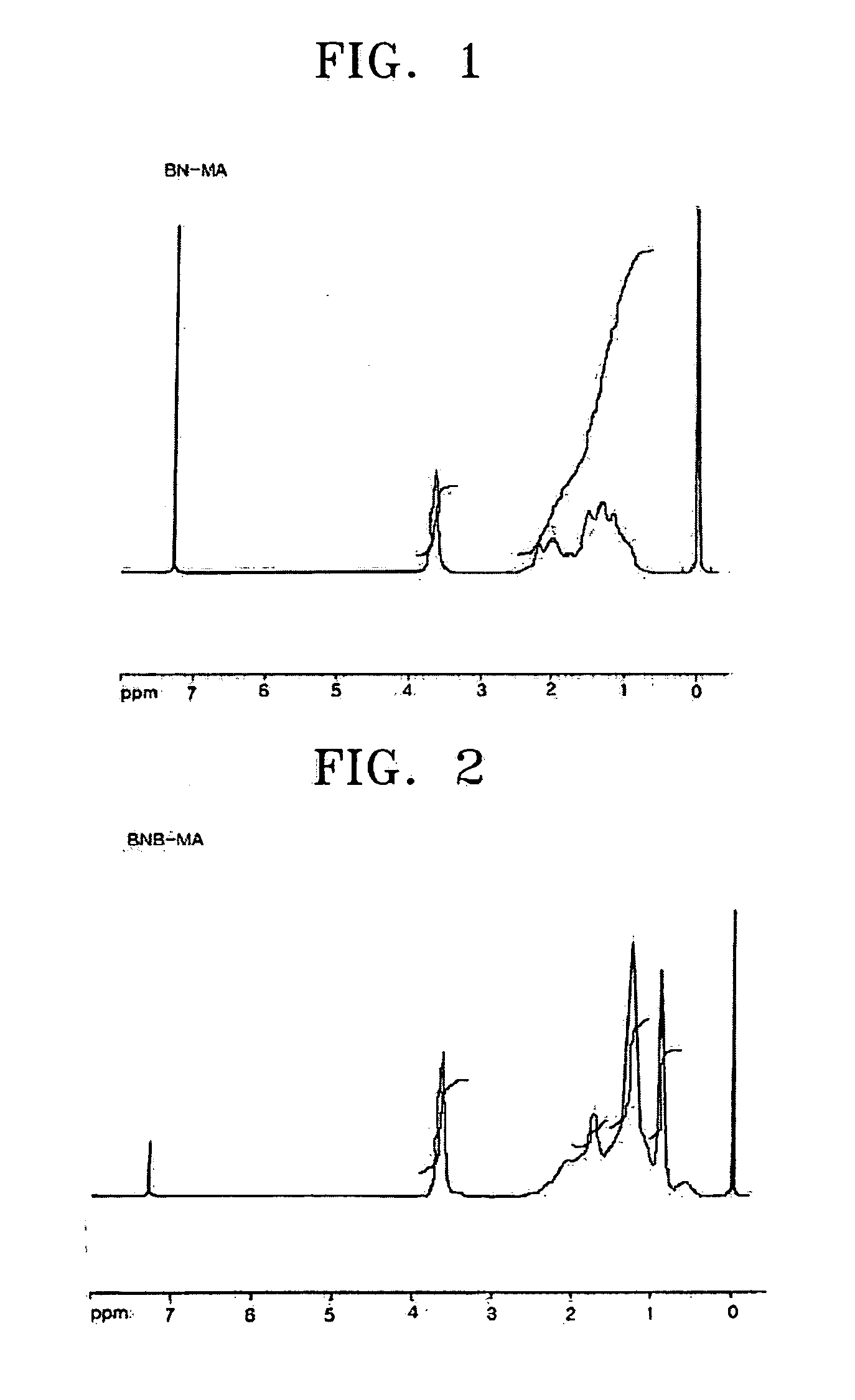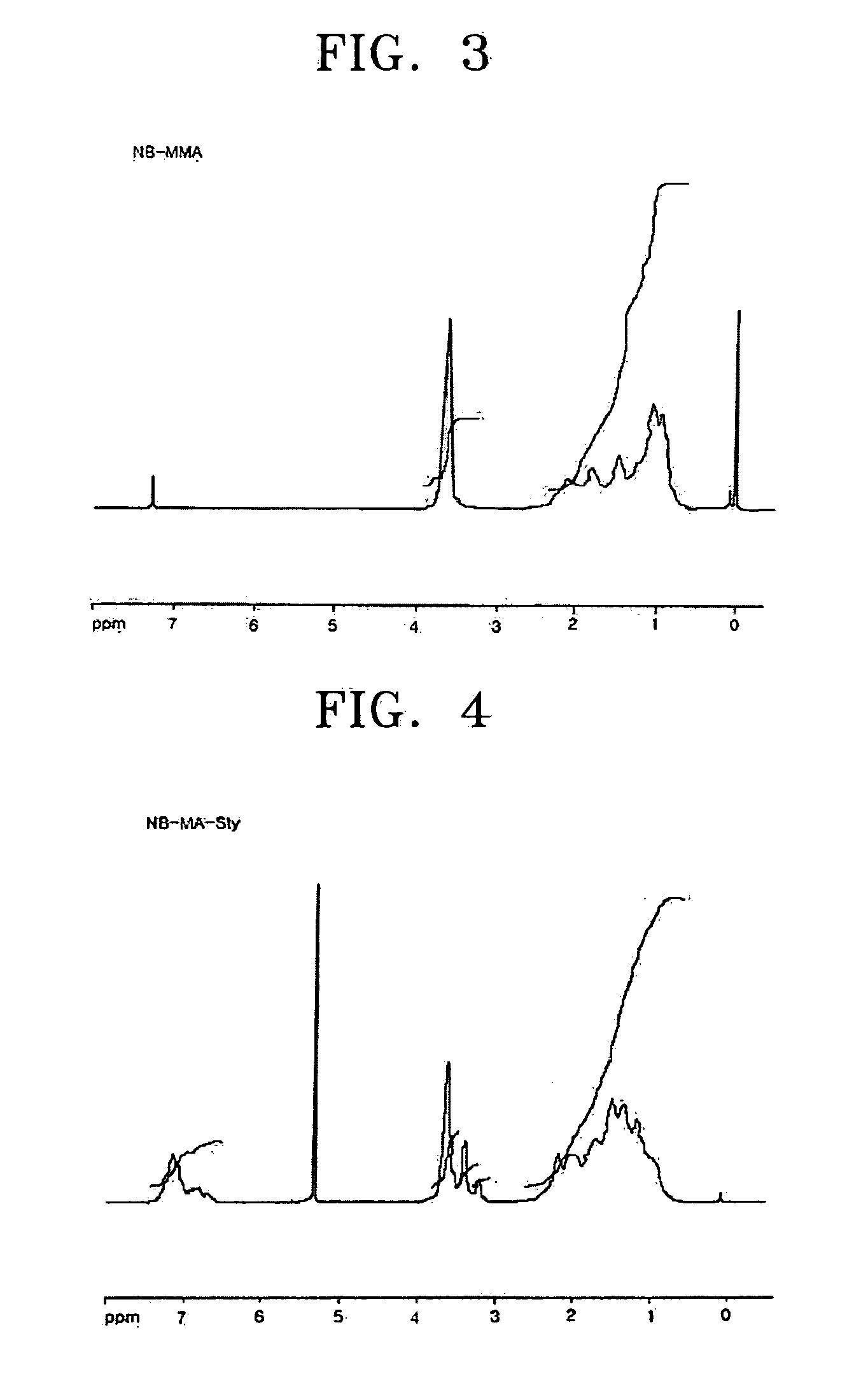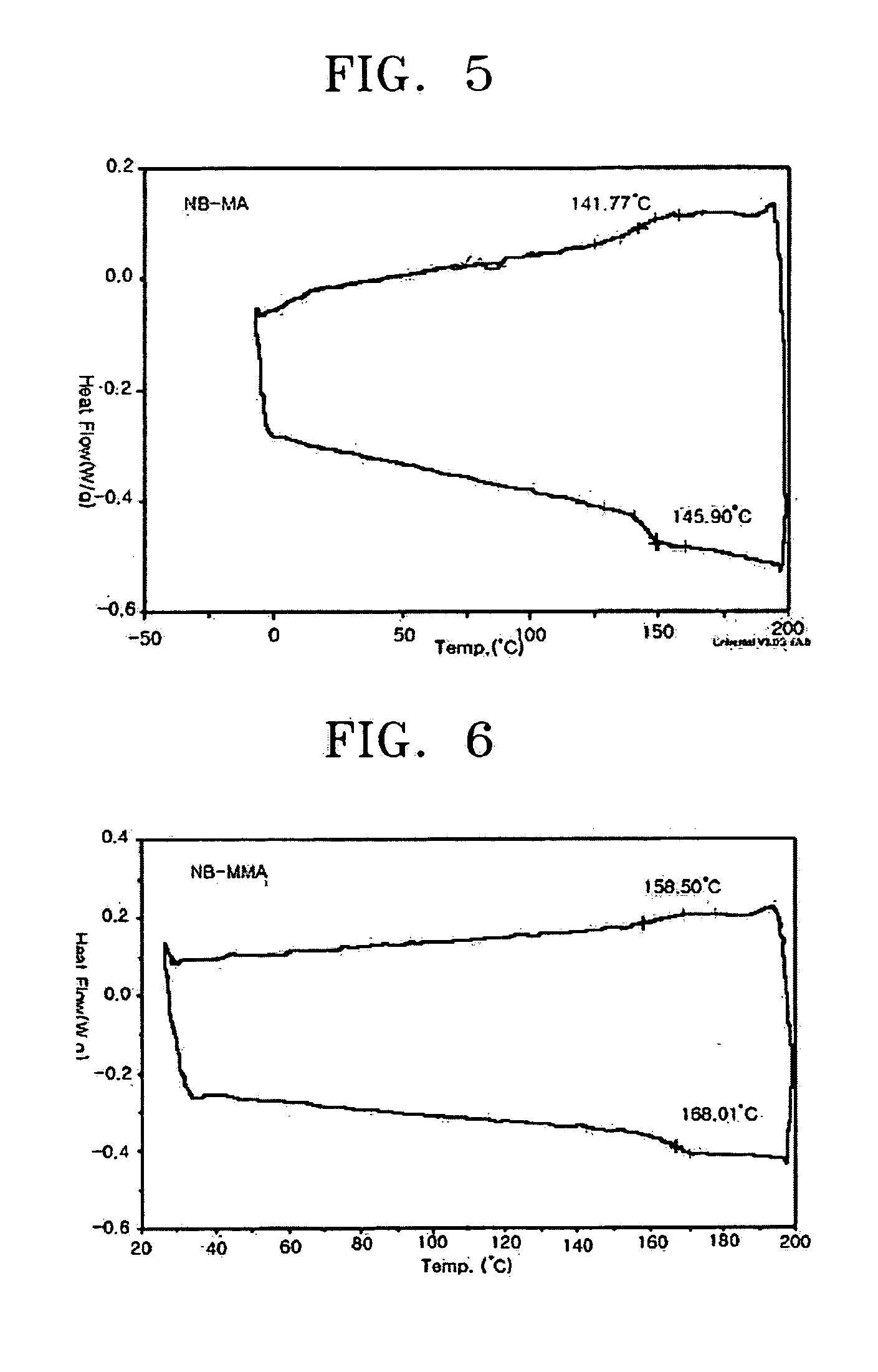Method of polymerizing cyclic olefins and vinyl olefins, copolymer produced by the method and optical anisotropic film comprising the same
- Summary
- Abstract
- Description
- Claims
- Application Information
AI Technical Summary
Benefits of technology
Problems solved by technology
Method used
Image
Examples
preparation example 1
Copolymerization of Norbornene and Methyl Acrylate
[0058] Norbornene (15.8 g, 168 mmol), methyl acrylate (10 mL, 112 mmol), and AlBN (2,2′-azobisisobutyronitrile) (0.037 g, 0.22 mmol) were charged into a 250 mL Schlenk flask and dissolved in 30 mL of toluene. Ethylaluminum sesquichloride (0.277 g, 1.12 mmol) was charged into a 100 mL flask and dissolved in 20 mL of toluene. The toluene solution of ethylaluminum sesquichloride was slowly dropped to the 250 mL Schlenk flask at −70° C. The reaction temperature was raised to 45° C. while stirring the mixture for 2 hours, and then the reaction was performed at 45° C. for 12 hours. The reaction solution turned to light green in color during the reaction. After the reaction was completed, the reaction solution was slowly dropped to 3000 cc of 5% v / v HCl—MeOH to precipitate a white polymer, which was filtered through a glass filter and dried in a vacuum oven at 70° C. for 12 hours to obtain a norbornene-methyl acrylate copolymer (11.7 g: 58...
preparation example 2
Copolymerization of Norbornene and Methyl Acrylate
[0060] Diethylaluminium chloride (1.36 g, 1.12 mmol) was used instead of Ethylaluminum sesquichloride used in Preparation Example 1. And, norbornene was copolymerized with methyl acrylate in the same way as the Preparation Example 1.
[0061] Polymerization yield was 12.1 g (60.2% by weight based on the total weight of used monomers). The copolymer had a molecular weight (Mw) of 68,000, and Mw / Mn of 2.12.
preparation example 3
Copolymerization of Norbornene and Methyl Acrylate
[0062] Diethylaluminium ethoxide (1.15 g, 1.12 mmol) was used instead of Ethylaluminum sesquichloride used in Preparation Example 1. And, norbornene was copolymerized with methyl acrylate in the same way as the Preparation Example 1.
[0063] Polymerization yield was 12.5 g (62.1% by weight based on the total weight of used monomers). The copolymer had a molecular weight (Mw) of 54,000, and Mw / Mn of 2.10.
PUM
| Property | Measurement | Unit |
|---|---|---|
| Temperature | aaaaa | aaaaa |
| Nanoscale particle size | aaaaa | aaaaa |
| Nanoscale particle size | aaaaa | aaaaa |
Abstract
Description
Claims
Application Information
 Login to View More
Login to View More - Generate Ideas
- Intellectual Property
- Life Sciences
- Materials
- Tech Scout
- Unparalleled Data Quality
- Higher Quality Content
- 60% Fewer Hallucinations
Browse by: Latest US Patents, China's latest patents, Technical Efficacy Thesaurus, Application Domain, Technology Topic, Popular Technical Reports.
© 2025 PatSnap. All rights reserved.Legal|Privacy policy|Modern Slavery Act Transparency Statement|Sitemap|About US| Contact US: help@patsnap.com



